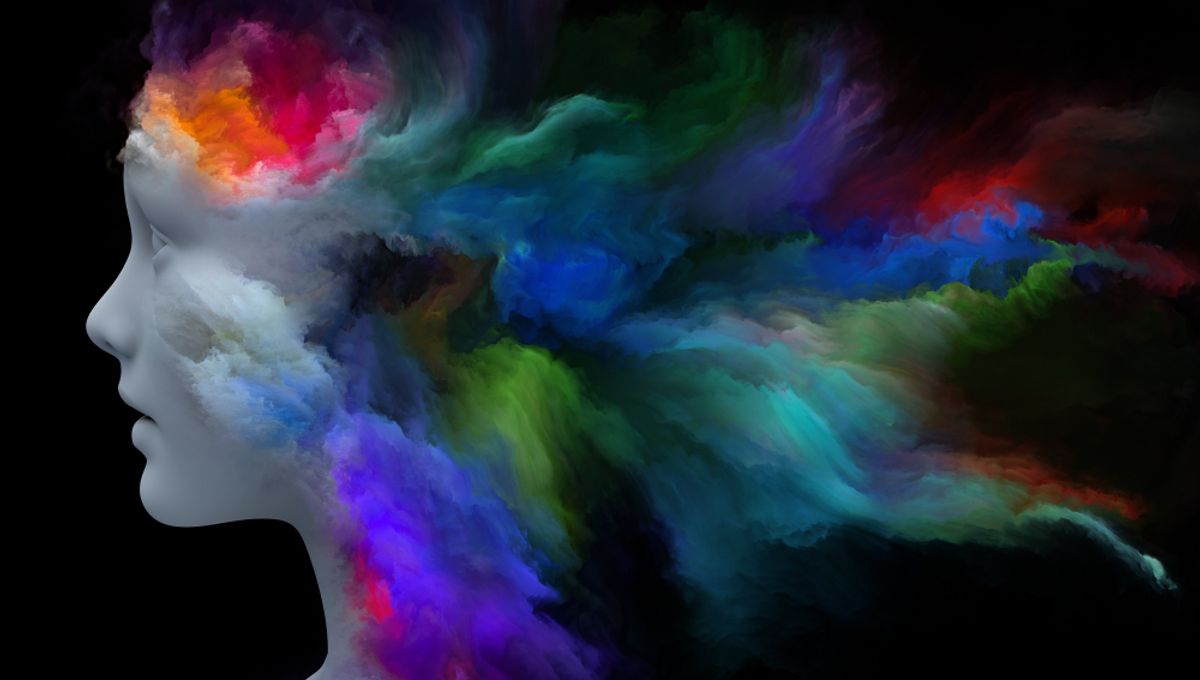
A new brain imaging study provides the deepest dive yet into the consciousness-altering effects of psychedelic drugs. After administering participants with the hallucinogenic compound N,N-Dimethyltryptamine (DMT), researchers linked the drug’s trippy effects to the dysregulation of a key aspect of human brain function, all of which sheds new light on the nature of our highly evolved mode of consciousness.
Found in trace amounts in countless plants and animals, DMT is perhaps best known as the active compound in the psychedelic Amazonian brew ayahuasca. To conduct their research, the study authors injected 20 participants with a high dose of pure DMT, triggering intense otherworldly trips that lasted for an average of 20 minutes.
Using a combination of functional magnetic resonance imaging (fMRI) and electroencephalography (EEG), the researchers took detailed recordings of participants’ brain activity before, during, and after their trips. “This work is exciting as it provides the most advanced human neuroimaging view of the psychedelic state to-date,” said study author Dr Chris Timmerman in a statement.
“The picture that emerges is one of a drug-induced collapse of the defining principal gradient of the brain,” write the researchers. The gradient in question consists of the highly-evolved transmodal association cortex pole (or “TOP”) at the upper end, with more basic sensory areas at the lower end.
The TOP is unique to the human brain, having emerged late in primate evolution and containing 20 times more neurons than the macaque cortex. Capable of operating independently from the brain’s sensory input areas, the TOP is associated with higher-level cognitive functions such as imagination and language.
However, under the influence of DMT, the TOP became more integrated with the rest of the cortex as communication between distant brain regions increased dramatically. Based on this observation, the study authors conclude that “psychedelics target and dysregulate developmentally and evolutionary recent [parts of the] cortex.”
“Moreover, [these findings] imply that the normal functioning of this high-level cortex may be necessary for the preservation of human-specific psychological faculties,” they write. In other words, the distinction between the TOP and lower-level brain areas may be what allows humans to maintain our highly developed consciousness.
Upon taking a mind-altering drug, however, we disrupt this essential gradient, and the brain suddenly becomes incapable of constructing our reality for us – hence the fantastic visions that populate psychedelic trips. This notion is further supported by the fact that, compared to the rest of the brain, the TOP contains the highest concentration of serotonin 2A – or 5-HT2AR – receptors, which act as the main binding site for DMT and other psychedelics.
Summarising the implications of these findings, Timmerman explains that “much of brain function is concerned with modelling or predicting its environment. Humans have unusually big brains and model an unusually large amount of the world. For example, like with optical illusions, when we’re looking at something, some of what we’re actually seeing is our brain filling in the blanks based on what we already know.”
“What we have seen with DMT is that activity in highly evolved areas and systems of the brain that encode especially high-level models becomes highly dysregulated under the drug, and this relates to the intense drug ‘trip’.”
The study is published in the Proceedings of the National Academy of Sciences (PNAS).
Source Link: Psychedelic Brain Activity Caused By DMT Illuminates Nature Of Human Consciousness